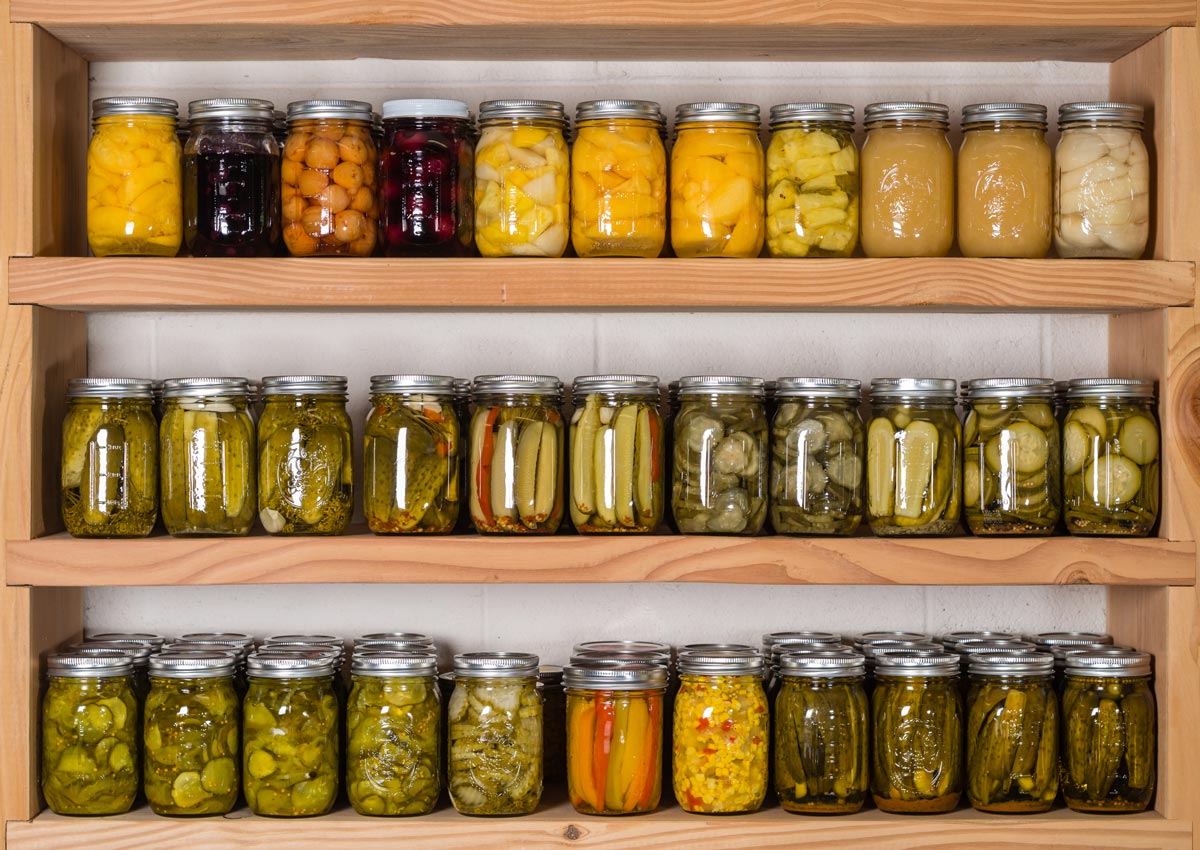This is part three of our four-part series where I’m answering your questions on all things modern homestead and pioneer living! In today’s episode, I’m doing a preserving Q&A (with a bonus sourdough question).
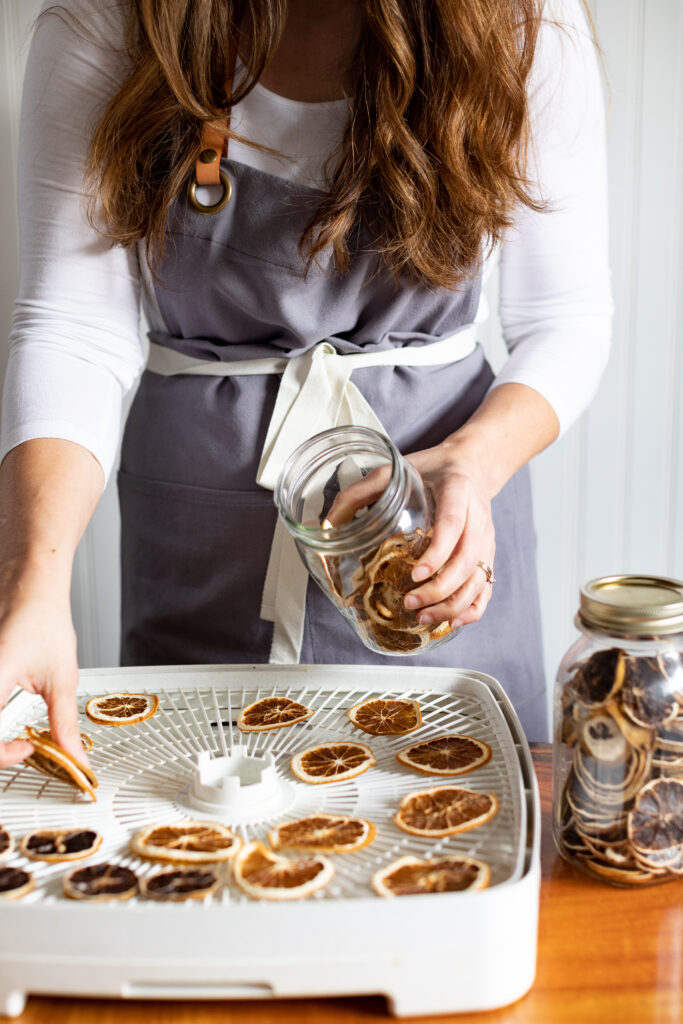
Welcome to the Pioneering Today Podcast! This is episode #371. You can find episodes #369 and #370 (parts one and two of this series) at the following links, where I answered your gardening questions and your livestock questions.
🍞 Struggling With Sourdough?
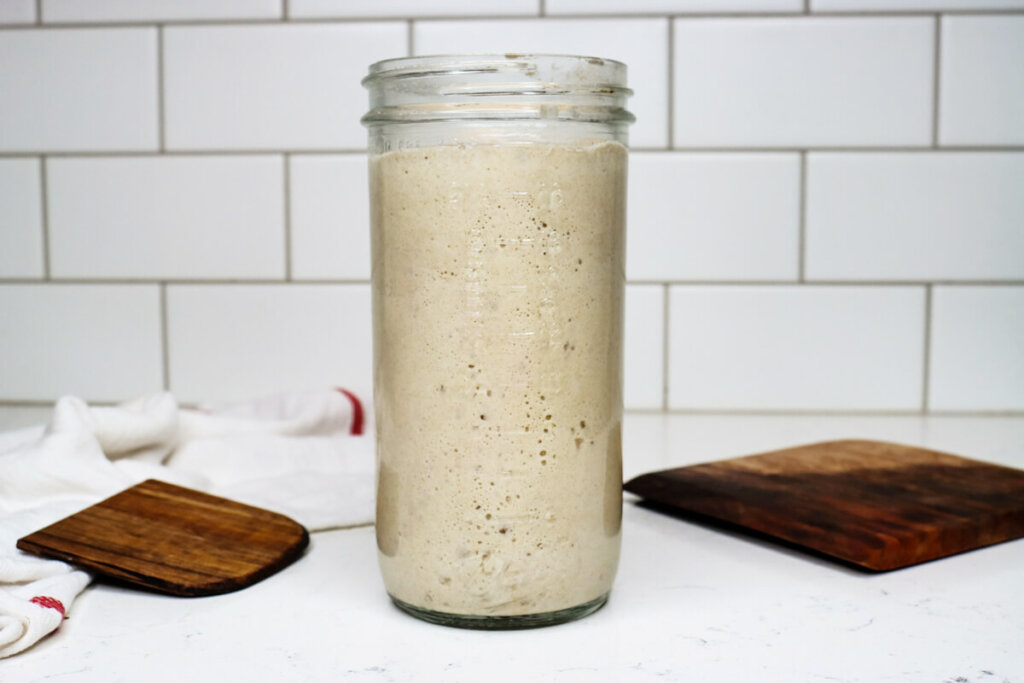
If your starter won’t take off, your loaves are dense and hard, or sourdough just flat-out overwhelms you…
👉 I’ll show you how to fix all of it.
Join my FREE live workshop and learn how to make a bubbly, active starter—the right way, from Day One.
🗓️ Jan 12 @ 1pm PT
Table of Contents[Hide][Show]
-
Preserving Questions:+−
- Can you preserve meat and other foods by dehydrating without a dehydrator?
- Azure Standard
- Is steam canning safe for canning meat?
- How much water in a pressure canner when double-stacking?
- Canning Smoked Fish
- Favorite Pressure Canner
- Should my pressure canner have to be constantly adjusted during the cooking time?
- Can you steam can in a pressure canner?
- Everything Worth Preserving
- More Articles on Home Food Preservation
Preserving Questions:
Can you preserve meat and other foods by dehydrating without a dehydrator?
Yes, you can dehydrate fruits and vegetables using an oven. Simply set your oven to 170 degrees F and place your food on an oven-safe tray until it’s completely dry.
When it comes to meat, I wouldn’t feel comfortable unless I was using a dehydrator where I can control the temperature. This is my personal opinions, however I also know people dehydrated meat for many years before there were ovens or dehydrators.
If you’re not using an oven (or a sun oven) as a dehydrator, then dehydrating food gets to be a bit more tricky.
There are plenty of fruits and vegetables that can be dehydrated without an oven, depending on your weather and how humid you are, simply by using the sun. But when it comes to meat or items that may spoil (or grow mold) before they’re completely dry, those really need the assistance of an oven or a dehydrator.
To dehydrate without an oven, many people will use screens to sandwich the food so it has air circulating all around it, but so that the flies can’t get to it. I’ve also heard of people laying a window over a screen to create more heat. And still yet, other people have used their cars parked in the sun to act like a makeshift oven (this is also a great method if your yard is prone to flies).
Be sure to check out my tips for dehydrating at home here.

Azure Standard
Since we’re on the topic of dehydrated foods, Azure Standard, who is the sponsor of this podcast, actually offers many dehydrated foods that you can buy in smaller quantities.
Sometimes I’m not certain I’ll actually like or use a specific dehydrated food, so I don’t want to spend my time dehydrating a large portion of that food if it will sit unused on my pantry shelf.
I like to test it out by buying it in small quantities first and Azure Standard is the perfect place. Right now, Azure Standard is offering you a great discount (for first-time customers only) of 10% off your order of $50 or more with coupon code “Pioneering10”.
One of my staples from Azure Standard is their organic onion powder. This year, in particular, I had a pretty bad onion crop, but I also don’t tend to grow enough to make my own out of what I grow, so I stock up in bulk from them.
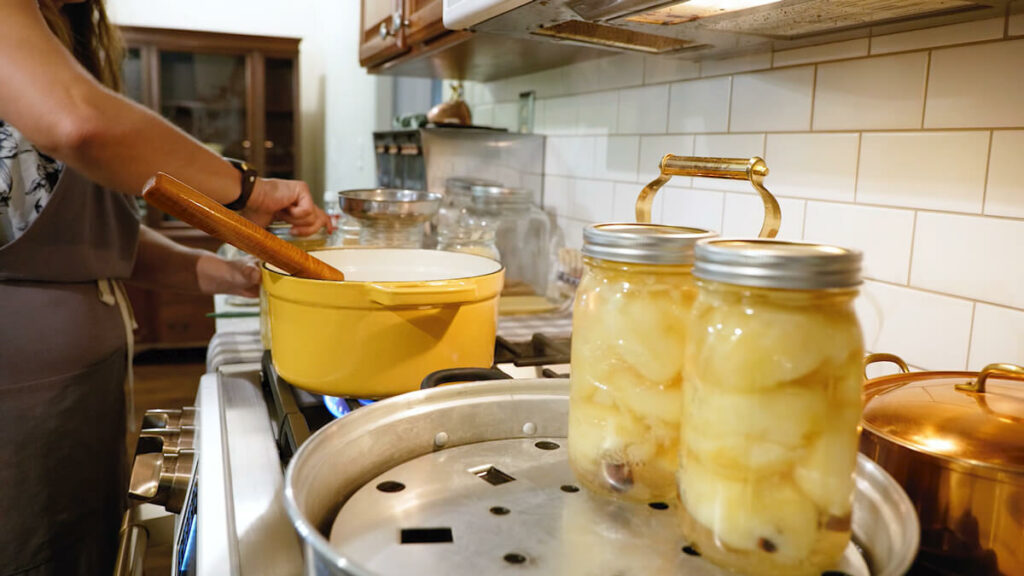
Is steam canning safe for canning meat?
No, a steam canner is not a safe or approved method for canning meat. I have had my steam canner for a number of years now, and love using it for canning, but they should only be used for water bath canning recipes.
Steam canners are safe for canning any acidic recipe that’s also safe for water bath canning. There are a couple of things you do differently when finishing your recipes, so be sure to check out some of my tutorials for steam canning, the pros & cons of electric canners, as well as this post on the USDA canning safety rules and whether we should trust them.
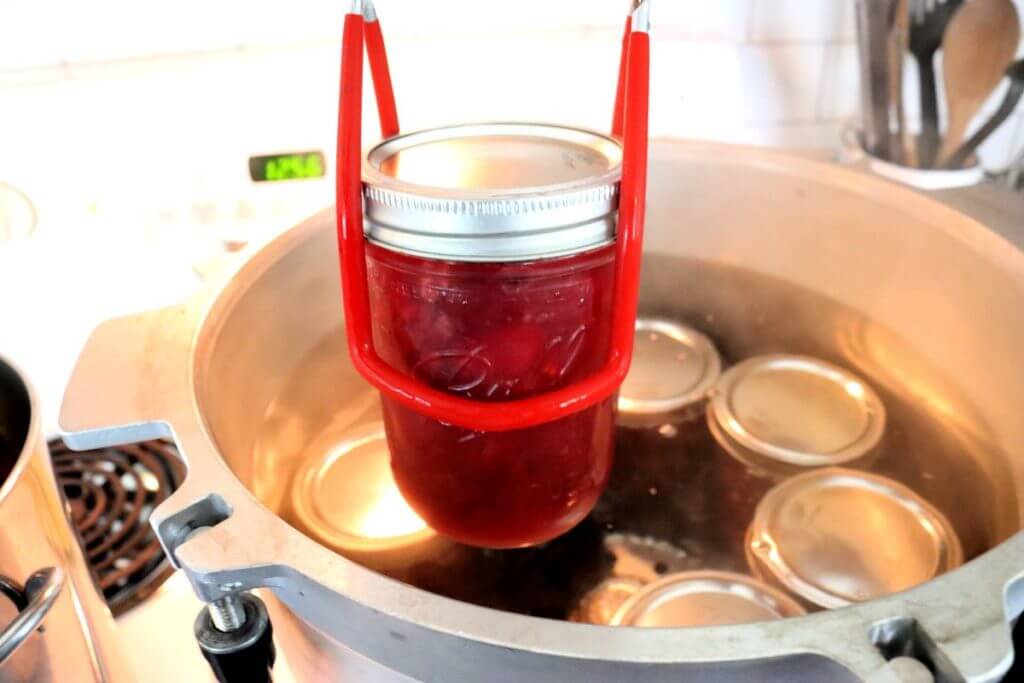
How much water in a pressure canner when double-stacking?
When you’re double-stacking in a pressure canner, you can use the same amount of water as if you had a single stack.
The only thing you need to keep in mind when filling your pressure canner is how long the pressure canner needs to be running for your specific recipe. If you’re processing something with a long processing time (say 75 minutes), you’ll want to make sure you’re up to about three or four inches of water inside your pressure canner before you add your jars.
If your processing time is much shorter, you can get away with about two inches of water.
This holds true whether it’s one jar, a single layer, or double-stacked with jars.
The important thing to remember is to make sure you have a rack between the layers of jars. Don’t just pile them on top of the jars below without separation.
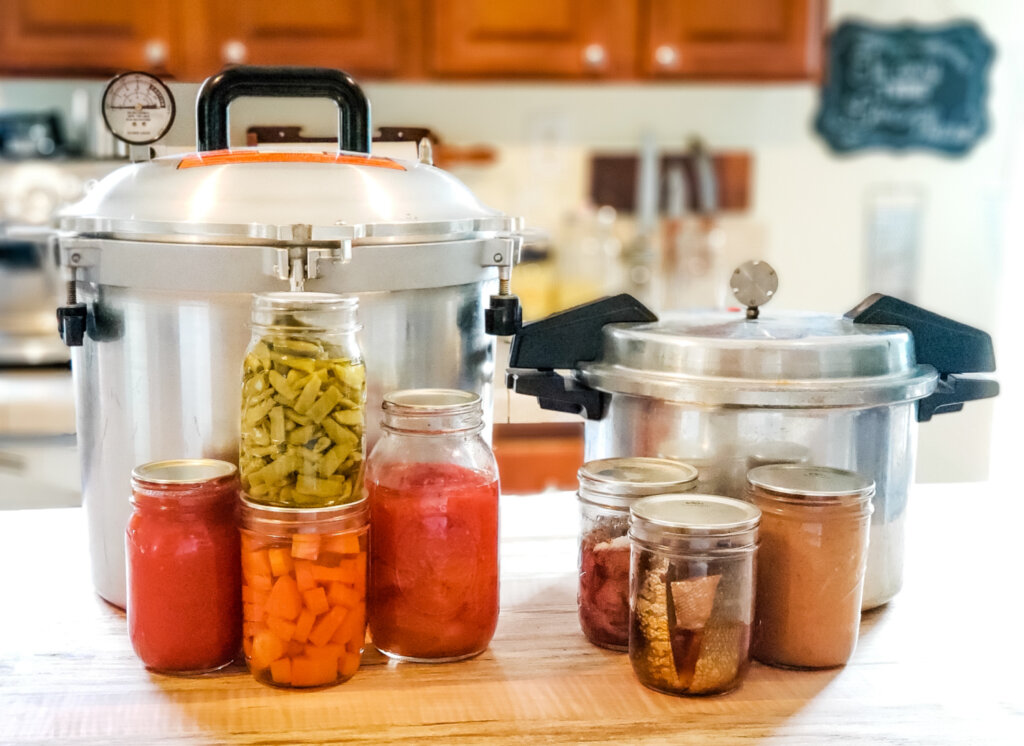
Canning Smoked Fish
When I gathered these questions for this podcast, I was on Instagram, and I shared a photo of some canned smoked salmon. I was then asked how to can smoked salmon, so here’s how…
When canning smoked fish, you don’t actually smoke it the same as if you were just going to eat it after smoking. You only half-smoke it to where it’s not completely raw, but it’s also not hot to the touch, then you can it from there.
Favorite Pressure Canner
My favorite make and model for a pressure canner is the All-American. I’ve tried other brands, but the All-American is a great quality and I love the way it cooks.
Before I had a gas stove, I also found that the All-American would hold its pressure much easier than other models without me constantly turning the burner higher and lower during the processing time.
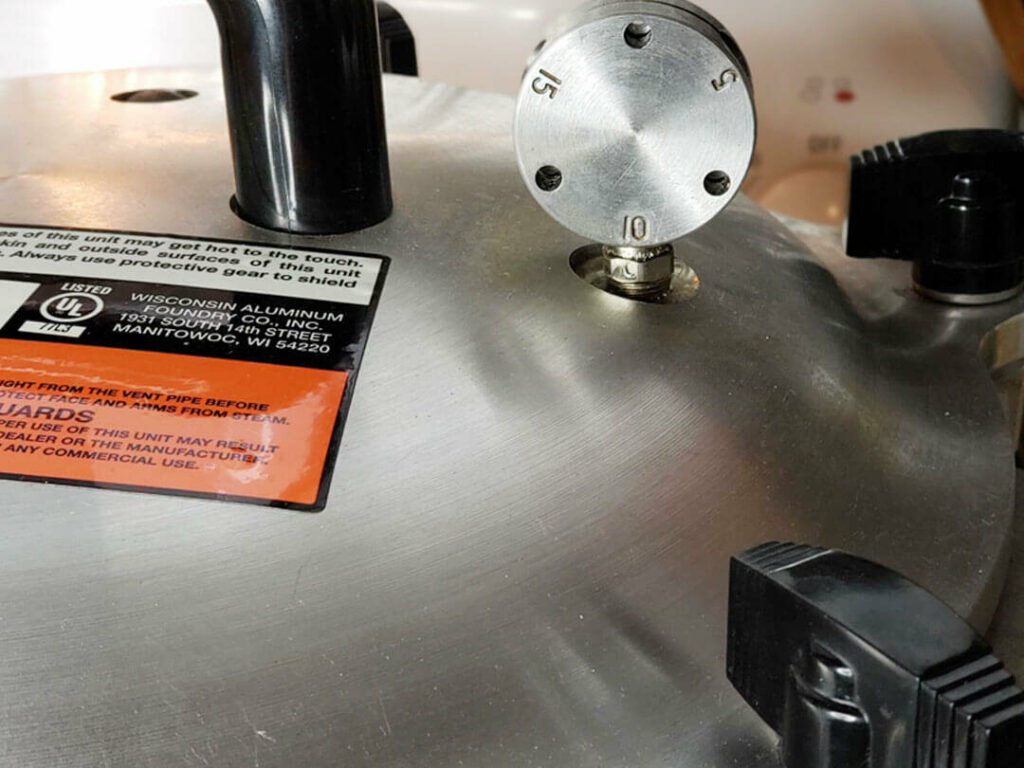
Should my pressure canner have to be constantly adjusted during the cooking time?
Though your pressure canner shouldn’t have to be constantly adjusted, it may need a few adjustments, especially when it’s just coming up to pressure.
Having to constantly adjust it could mean that you’re bringing it up to temperature too quickly, then needing to find the right temperature to maintain the pressure.
If this is the case, try bringing it up to pressure a bit slower by using a lower temperature.
The other thing to consider is your stove. It could be that you have a faulty burner, as I’ve experienced this myself.
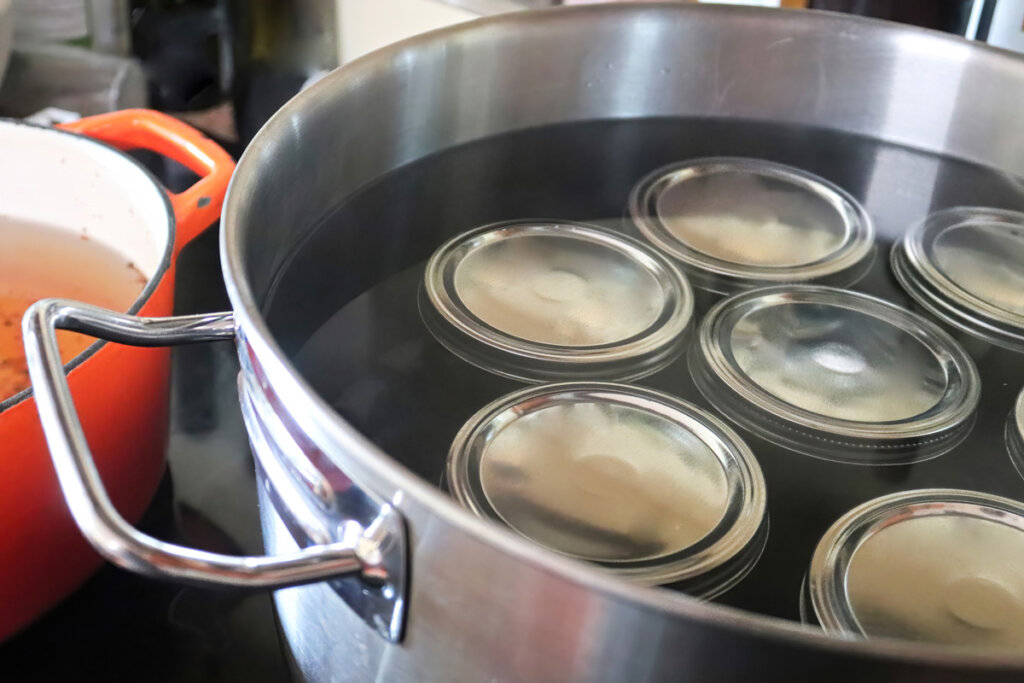
Can you steam can in a pressure canner?
Yes, however it’s not really what I would call steam canning.
I’ve seen where people will put their jars into the pressure canner and place the lid on, however not tighten down the lid. Then, once the steam starts escaping from the pressure canner they’ll start their time.
This sounds good in theory, however I’ve never seen it deemed safe from a tested source.
What I have done instead is to use my pressure canner as a water bath canner. I demonstrate how to do this in my Home Canning With Confidence course. If you’re looking for more information and tutorials on canning, I highly recommend checking out that course.
But to do this, I simply fill the canner as I would a water bath canner, until my jars are completely submerged, then use a cookie sheet as a lid.
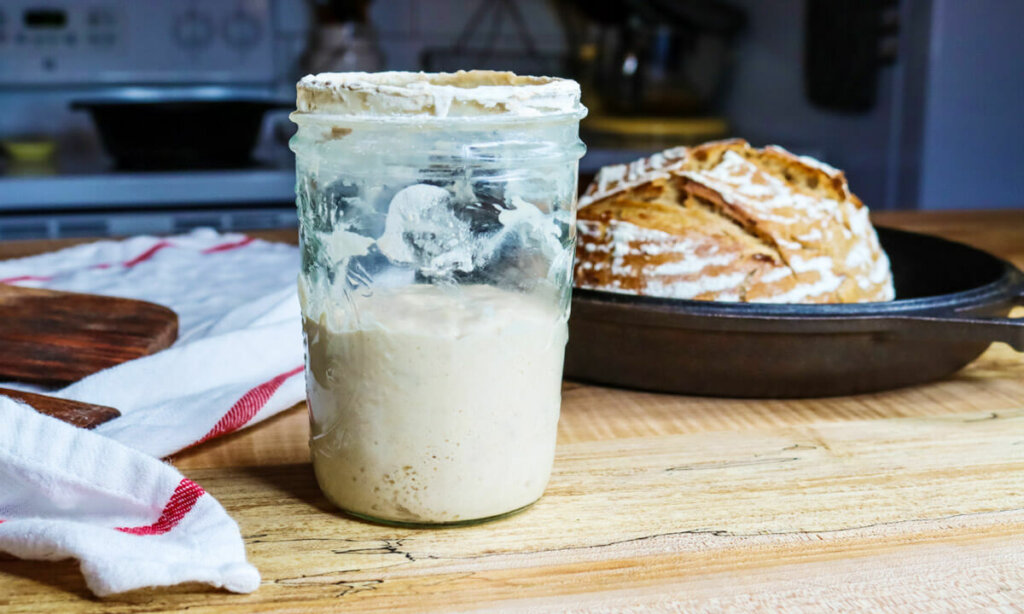
Sourdough Question:
We have a bonus sourdough question that I tossed in here with the preserving questions since I didn’t get enough to merit an entire sourdough Q&A.
Be sure also to check out my bread baking class, where I cover sourdough baking, my post on how to make a sourdough starter, my beginner sourdough sandwich bread recipe, and even my chocolate sourdough bread recipe (it’s a must-have for the holidays!).
If you’ve purchased a dehydrated sourdough starter, you can also learn how to rehydrate a sourdough starter here.

How do I know if my sourdough starter has gone bad?
Honestly, you’ll know! There’s a difference between a strong fermented smell and a putrid rotten or rancid smell. Sourdough starter can smell like vinegar or a strong alcoholic smell, but that doesn’t mean it’s bad.
It can also build up a dark liquid layer, called “hooch,” and that’s also harmless. Sometimes the top of the starter will even turn gray and get firm. All you need to do is pour off the liquid and/or scrape off the thick gray layer, feed it and continue with daily feedings until it’s bubbly and active again.
What you don’t want to see is pink, gray, green, or black fuzzy mold. Also, if it smells putrid, like you may get sick after smelling it, those are signs that your starter has gone bad.
Trust me when I say, sourdough starters are extremely resilient and I’ve neglected mine for an extremely long time without them going bad (like, forgetting them in the back of the refrigerator for months on end!).

Everything Worth Preserving
If you’d like more tutorials and information on preserving, be sure to check out my book, Everything Worth Preserving. It is shipping now, through the publisher, and it covers the nine food preservation methods that you can safely preserve food at home.
Links Mentioned in This Episode:
- The Norris Farmstead is ready for booking! A while back I shared in a podcast episode how my husband and I purchased an old 40-acre homestead. We’ve since renovated the house, begun renovating the land, and turned it into a farm-stay. Listen to the planning our farm-stay episode here. And if you want to check out the farm-stay and book a night with us, visit the Norris Farmstead website here.
- To follow along on the renovation journey, be sure to check out this post on our new 40-acre homestead journey. (Spoiler alert, next week, December 21, 2022, I’ll update that post with a before and after video tour!)
- Verse of the Week: Proverbs 1:2-4

More Articles on Home Food Preservation
- 10 Ways to Safely Preserve Food at Home
- Tips for Home Food Preservation – Seasonal Preserving Each Month
- A Complete Guide to Home Food Preservation (What to do When You Can’t Find Canning Supplies)
- Home Food Preservation- Preserving Plan for a Year’s Worth of Food
- How to Store Home Canned Food Safely – Jar Stacking & Canning Rings
- 129+ Best Canning Recipes to Put Up This Year
- How Do You Know if a Canning Recipe is Safe
- How to Pick the Best Preserving Methods
- How to Convert Recipes for Canning + Safety Tips
- The Science of Home Food Preservation
- Planning and Preserving Q&A with Melissa
- How to Preserve Meat, Eggs, & Dairy
- How to Preserve Zucchini
- Freeze Dried Eggs for Long-Term Storage (+ Reconstituting Freeze Dried Eggs)
- 12 Ways to Preserve Apples at Home
[fusebox_transcript]
